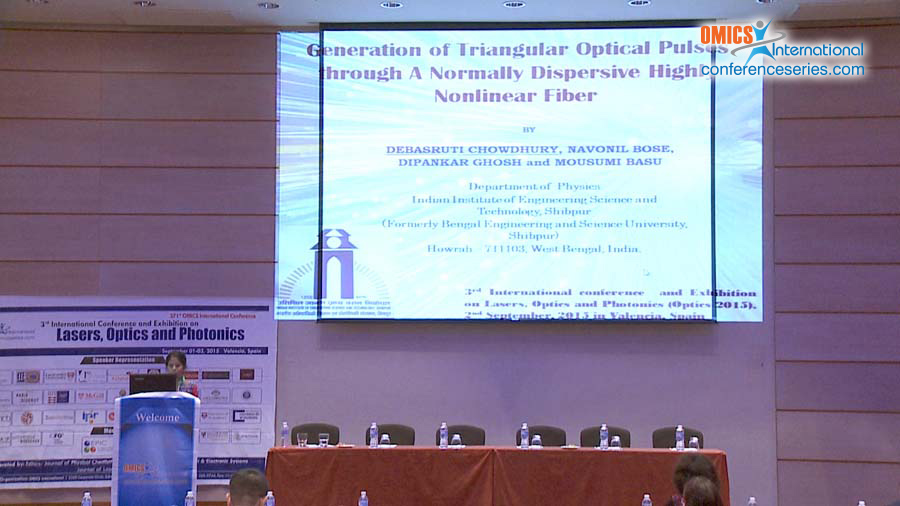
Debasruti Chowdhury
Indian Institute of Engineering Science and Technology Shibpur, India
Title: Generation of triangular optical pulses through a normally dispersive highly nonlinear fibre
Biography
Biography: Debasruti Chowdhury
Abstract
At present many researchers have found research interests on some special type of optical pulse waveforms other than Gaussian or secant pulses. Specially, triangular pulses have potential applications in optical signal processing, wavelength conversion, time domain add-drop multiplexing and many more. Literatures reveal that the combined action of self phase modulation and normal dispersion on pre-chirped Gaussian pulse can lead to the generation of triangular pulse within a short range of fibre length. In this work we present the numerical results of the generation of triangular pulses through a normally dispersive highly nonlinear fibre (ND-HNLF). Here we investigate the effects of input power, input energy as well as the chirping parameter on the stability of triangular pulse generation. An input Gaussian pulse with an initial chirp is fed into the ND-HNLF and its propagation through the fibre is studied by solving the nonlinear Schrodinger equation (NLSE) numerically. To check whether the output pulse has reached the triangular zone the Structure Factor is calculated. The proposed ND-HNLF is used also as a fibre amplifier i.e. the effect of gain on the optimum length of triangular pulse generation and its stability is studied here. It has been noticed that controlling the input power of the chirped Gaussian pulse can lead to create triangular pulses for a stability length ~ 50 m in transient-state propagation regime. For active ND-HNLF the stability length is increased sufficiently in the steady state domain. This approach of creating triangular intensity profile is suitable for a range of several photonic device applications.

